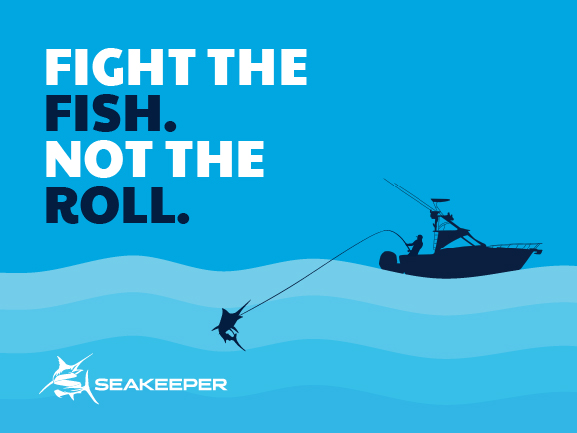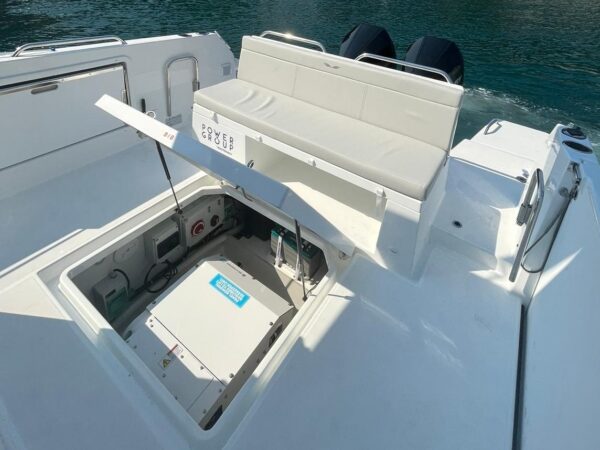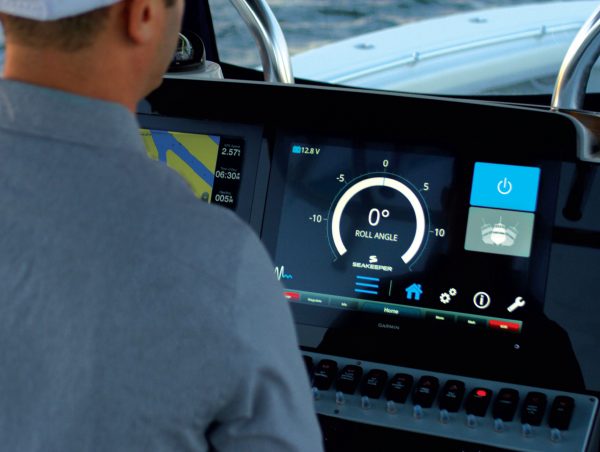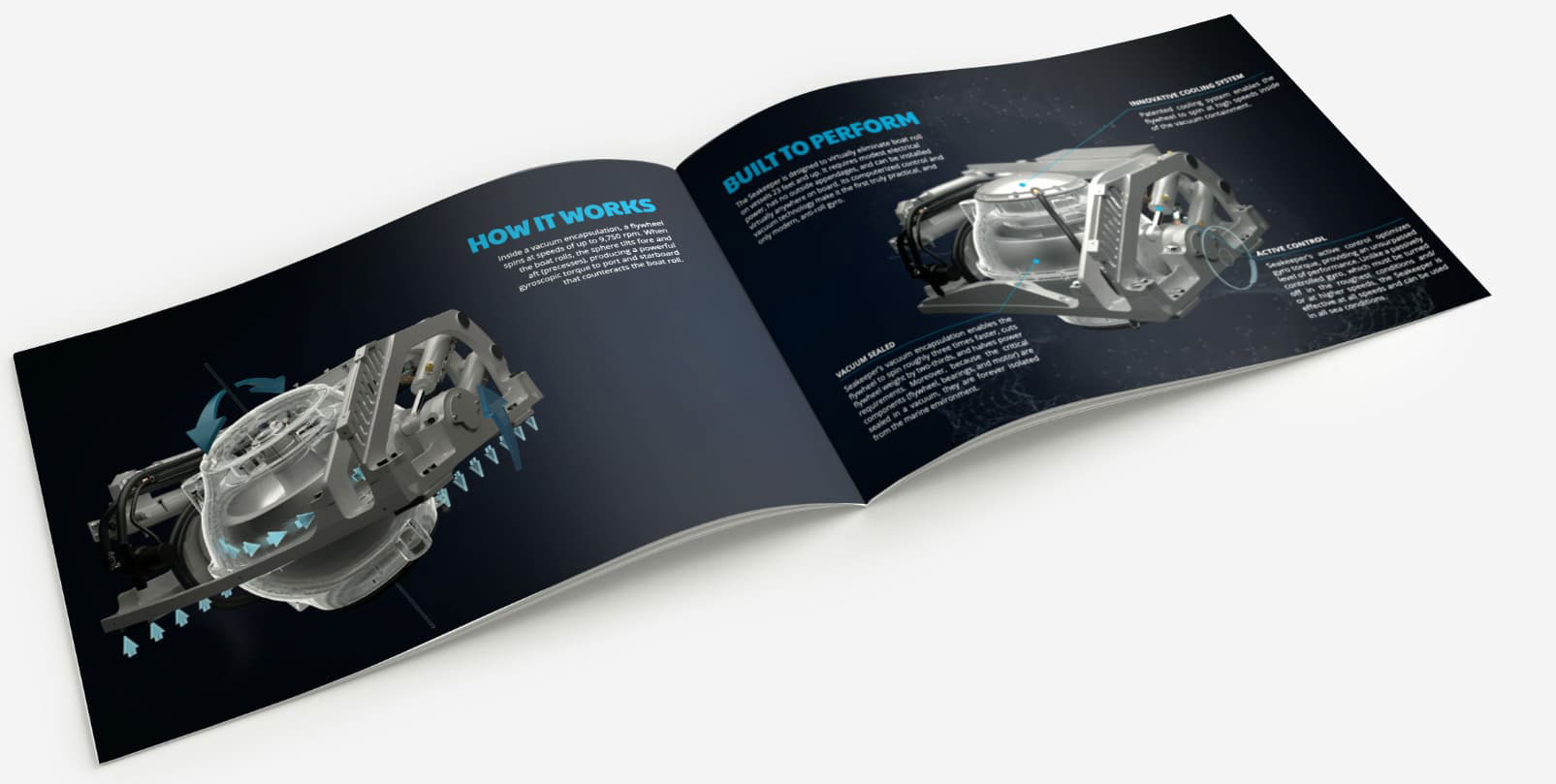When Not to Use Your Seakeeper
It’s become a question we’re asked often: Does Seakeeper work underway? The simple answer is yes (you can read more about that in this article), but there are some instances and maneuvers where we recommend locking your Seakeeper, so let’s dive into what that means.
Seakeeper was designed to dampen a boat’s cyclic roll motions on the water, or in other words, reduce the side-to-side roll that happens naturally to every boat. It is not a substitute for adequate hull stability, and it won’t prevent instability of other types, like those caused by improper boat operation. That’s what we’ll cover here – the atypical and improper boat handling of making aggressive maneuvers at high speeds, and where the Seakeeper comes into play.
UNDERSTANDING AGGRESSIVE MANEUVERS AT HIGH SPEEDS
Aggressive maneuvers may result in the loss of control of the boat. That could mean loss of control about the pitch, roll, or yaw axes. Aggressive maneuvers are amplified at high speeds and losing control of the boat can be dangerous. Two well-known examples of aggressive boat operation resulting in the loss of control include:

- Chine walking (loss of control about the roll axis)
This typically occurs when a boat is operated at very high speeds and leaves only a small portion of the hull in the water. Most often, a boat planing in this manner will not have adequate roll stability and will roll rapidly in one direction until the chine is immersed and then roll back rapidly in the opposite direction. This creates a dangerous situation that often worsens with each roll cycle of the vessel. - Spinning out (loss of control about the yaw axis)
This loss of directional control typically occurs when the vessel operator executes a hard turn at a high speed and the boat’s stern “spins out” in the same way a car might when it takes a turn too fast. When this motion is not expected, it can be dangerous for those on board and can cause injury and/or ejection.
These are just two examples of loss of control resulting from aggressive boat operation at high speed, during which, the Seakeeper should be locked. If you have questions about other maneuvers you make regularly that you’re concerned about, you can contact us to discuss.
WHY IS IT IMPORTANT?
The types of maneuvers mentioned above are rare, and as a normal boat operator, you likely have nothing to worry about. It is important to note that during operation, Seakeeper can output a pitch moment (this happens when the Seakeeper sphere tilts fore and aft – see how it works) that can create a small bow-down or bow-up trim change. This moment is negligible during normal operation but enhanced at increased turn rates and speeds. For example, when making a high-speed 90-degree turn in less than 2 seconds on a Seakeeper 1-equipped boat, this pitch moment is similar to the effect of a passenger taking three steps forward on the vessel. The pitch moment increases as the turn rate increases. For this reason, it’s best to lock the Seakeeper in a vertical position during high-speed aggressive maneuvers to ensure the Seakeeper is not contributing to any vessel movement during improper operation.
WHAT TO DO
If you intend to operate your boat using aggressive maneuvers at high speeds, the Seakeeper should be locked in the vertical position before the execution of such maneuvers.
HOW TO DO IT

To lock the Seakeeper in the vertical position:
1. Turn the boat to starboard at slow speed while the Seakeeper is in active stabilizing mode (unlocked).
Seakeeper 5” Display showing active stabilizing mode (unlocked) (button is blue, as indicated by white arrow)

2. After turning to starboard for 5 seconds, turn the stabilize mode off (locked) while continuing to turn
Press this button to turn the stabilize mode off (button will turn gray)
3. Go to the Service Page on the display and confirm the Seakeeper Gyro Angle is within +/- 10 degrees of 0 degrees.

To access the Service Page, press the menu icon as indicated above by the white arrow.
The Service Page is denoted by the wrench icon.
4. If the Seakeeper Gyro Angle is not within +/- 10 degrees of 0, then go back and repeat the steps.
ARE THERE EXCEPTIONS?
Just like in the English language, there are exceptions to every rule. Most often, aggressive maneuvers are done at high speeds on purpose. Racers, thrill seekers and product testers may intentionally make such maneuvers. It’s during these instances that we recommend taking the above actions to lock your Seakeeper in place to prevent any potential interference. However, this information should not change a boater’s actions in the case of an emergency maneuver. To avoid collision, the operator should feel free to maneuver the boat as needed to ensure the safety of those on board.
If you’re looking for instructions on locking your Seakeeper in the upright position but have an earlier 3.5” display, please reference the Technical Bulletin on this topic available in the Technical Library.




